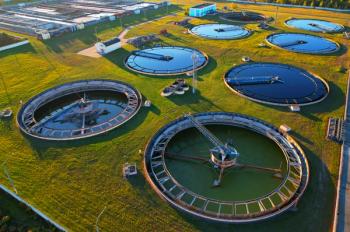
- Special Issues-08-01-2012
- Volume 30
- Issue 8
HPLC/UHPLC & LC–MS
For those who use HPLC, UHPLC, and LC–MS, keeping up with the latest trends and techniques is essential. Participants in this forum are Lester Taylor, Agilent Technologies; Robert Classon, Shimadzu Scientific Instruments, Inc.; Atis Chakrabarti, Tosoh Bioscience LLC; Gaurang Parmar, Sigma-Aldrich/Supelco; and Jeff Layne, Phenomenex.
For those who use HPLC, UHPLC, and LC–MS, keeping up with the latest trends and techniques is essential. Participants in this forum are Lester Taylor, Agilent Technologies; Robert Classon, Shimadzu Scientific Instruments, Inc.; Atis Chakrabarti, Tosoh Bioscience LLC; Gaurang Parmar, Sigma-Aldrich/Supelco; and Jeff Layne, Phenomenex.
What trends have emerged in liquid chromatography–mass spectrometry (LC–MS) recently?
Taylor: The trend toward more complete solutions and kits has continued, particularly for many of applications in food, environmental, and forensics markets. These kits provide users with a time saving approach to implementing analytical methods by providing databases and libraries of compounds of target analytes. These kits also include custom LC–MS methods optimized by application experts at customer sites.
Classon: One of the newest trends is a move toward making LC–MS more compatible with ultrahigh-pressure liquid chromatography (UHPLC). As chromatography has become faster and chromatographic peaks have narrowed considerably, there is a greater need to perform quantitation on peaks that are less than 1-s wide, and perform quantitative and qualitative analysis on fast peaks in a single 1-min run. For high throughput labs such as clinical labs and contract research organizations (CROs), the lab that runs the most samples per day, makes the most profit. It will be commonplace to see drug screens or pesticide screens with hundreds of target analytes performed in 1–2 min. Even as pharmaceutical companies are producing fewer new drug applications (NDAs), they still need to get better drugs into clinical trials faster. So, just about anyone with more than a few samples is trying to get faster results. LC–MS should not be the limiting step in getting a drug to market. So we should expect to see faster instruments that can acquire and process more data in a shorter period of time. As everything gets faster, there will be more of a need to handle overlapping peaks, perhaps hundreds at a time, so instead of LC–MS operating at a few thousand data points per second, we will see instruments producing hundreds of thousands of data points per second or more.
Volatile buffers are just that, volatile. What techniques would you recommend to ensure mobile-phase integrity during chromatographic run sequences when using UHPLC?
Chakrabartir: Mobile-phase integrity during chromatographic run sequences when using UHPLC depends on the composition of the buffer, quality, and percentage of salt and organic in the buffer, how the user is storing and maintaining the buffer, the method of degassing it, and so on, particularly in the case of routine analysis where a bulk amount is made and used continuously. Nowadays most labs are buying ready-made buffers as a 10× stock and then diluting it afresh when needed. Using a closed container to prevent evaporation, an antibacterial agent, filtering the sample, and checking the pH of the buffer from time to time to monitor aerial oxidation in case of pH-dependent analysis all help in maintaining the integrity of the mobile phase. If the UHPLC is used for hyphenated techniques such as LC–MS, then compatibility of mobile phase for LC–MS analysis also should be considered.
Parmar: Use high-quality solvents and modifiers. Extra care needs to be taken to eliminate particulates including staying away from solubility limits and filtering.
Layne: Use mobile-phase reservoirs with screw caps with minimal openings to allow for evaporation — openings in caps will accommodate mobile-phase tubing with a sinker, but only need the one line — block off all other openings to prevent evaporative loss of volatile buffers. Make fresh mobile phase daily and filter; this serves two purposes: no worries about evaporative loss of volatile buffer, and aqueous buffers are excellent media for microbial growth, which can wreak havoc on UHPLC systems and columns.
In what areas do you see UHPLC becoming more popular in the future?
Chakrabarti: UHPLC is well accepted in the scientific community for fast separation and low solvent consumption. Although it has been almost 10 years since its inception in 2003, a recent 2010 report in Lab Manager magazine shows that conventional column packing containing 3–5 µm particles still dominates the market — with shares of 80%. Upfront cost, method transfer issues, the need for skilled personnel, and less variety of stationary phases are some of the factors still holding a customer back from buying a UHPLC column. I see UHPLC being more popular in quality control labs, routine analysis labs, and law-enforcement labs in the future.
Parmar: UHPLC is currently adopted as a new technology and a real performance enhancer by big pharma who are trying to shorten their development times with higher resolution. In the near future, we envision UHPLC becoming more popular in biopharmaceutical companies, CROs, and analytical services labs. This encompasses a general adoption by currently heavy HPLC users, who are not budget constrained or are well funded.
Layne: In the very near future, one area in which we see an increasing utilization and growth of UHPLC technology is in metabolomics, where the ultrahigh peak capacities that UHPLC columns are capable of generating are often necessary to achieve a reasonable degree of separation for the extremely complex biological matrices that are being analyzed. With a more long-term perspective, it is reasonable to expect that almost all industries will see an increasing usage of UHPLC technology as older, conventional HPLC systems are replaced and upgraded. This trend will certainly be accelerated as more manufacturers are able to offer UHPLC instrumentation, spurring increased competition and more budget-friendly pricing.
How do you see LC–MS evolving in the future?
Taylor: Advanced LC–MS technology continues to be applied in research applications such as peptide and protein quantification. The clinical market continues to be a very strong growth area for LC–MS with the analysis of vitamin D as the largest single market for LC–MS. Pain management is another major application for LC–MS because of the robustness and cost effectiveness of analysis. The multi-assay nature favors LC–MS for this type of analysis. The analysis of endogenous steroids by LC–MS is another area that is important.
High-resolution LC–MS continues to be used to provide qualitative and quantitative information for a range applications. Increasingly users are recognizing the importance of sophisticated software tools to process raw data and produce key analytical information from complex data sets.
Classon: LC–MS has evolved into a pretty good technology now and the gains in the physics boxes will be more incremental rather than revolutionary. The clinical marketplace is going to be the big influence in the evolution of LC–MS in the near future. LC–MS is already a major factor in clinical labs and is becoming more significant every day because it can do so much more than any other analytical technique. In most cases, it is the gold standard for a biological analysis. Currently, much of the use of LC–MS is still mainly for small molecule analysis such as the analysis of pharmaceuticals or small biomolecules. The trend going forward will be more on biotherapeutics, biosimilars, and even proteins. Here, LC–MS offers both sensitivity and selectivity, the keys to making a difficult analysis possible. Biological samples often require many steps in terms of sample preparation including concentration, fractionation, digestion, or other types of cleanup that were never designed to work together. That’s where UHPLC typically comes in. To really speed up analysis of these types of samples and to reduce costs per test further, there will need to be more emphasis on the systems to automate these individual steps so you gain not only speed, but also better quantitative transfer from step-to-step to provide better reproducibility. I believe we will see more automated systems designed to allow for injection of whole plasma samples for faster analysis. Analyses that might have taken many hours or days will become possible in minutes. If you were looking at the metabolism of a protein based drug or a low abundance protein biomarker, this type of sample prep system would complement LC–MS significantly by allowing a biological sample to be processed, digested, and analyzed in minutes instead of days. In short, this type of system allows LC–MS to work better and produce better results.
Articles in this issue
over 13 years ago
Gas Chromatographyover 13 years ago
Data Handling/Softwareover 13 years ago
Capillary Electrophoresisover 13 years ago
SFCNewsletter
Join the global community of analytical scientists who trust LCGC for insights on the latest techniques, trends, and expert solutions in chromatography.





